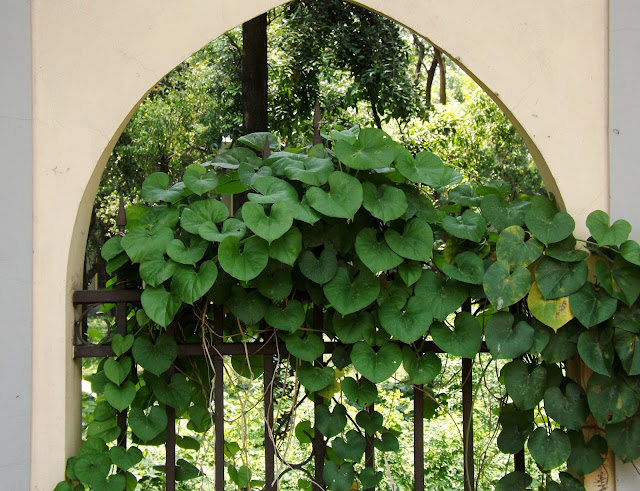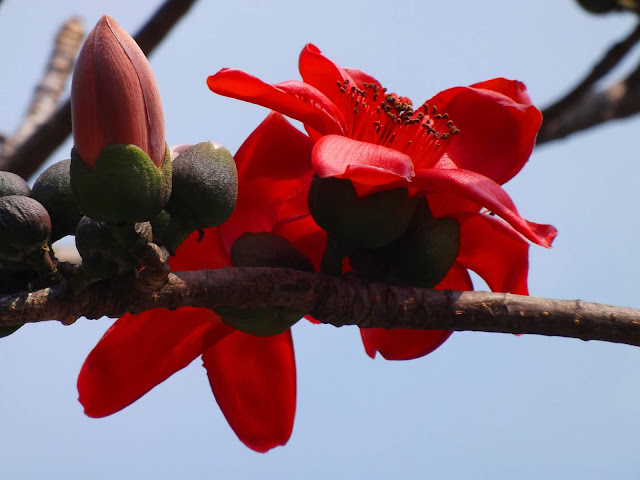Muchokundo or Mapple-leaved bayur, Pterospermum acerifolium
Muchokundo or Mapple-leaved bayur (Pterospermum acerifolium, family: Sterculiaceae) is a large-sized evergreen tree with pubescent young shoots, rounded trunk and Mapple-like leaves, attaining a height of 30 m. Bark is grey, glabrous and soft. Wood is reddish. It is found in the forest of Chattogram and Chattogram Hill Tracts and Sylhet in Bangladesh. It is planted in parks, botanical gardens and beside avenue as an ornamental tree. The tall tree is indigenous to Indian subcontinent as well as some countries of Southeast Asia.
Other names: Muskanda, Konokchapa (Bang); Dinnerplate tree, Bayur tree (Eng).
Leaves are large, usually 12-20 cm long and 10-15 cm wide, multilobed or palmate, irregularly toothed, base cordate, upper part dark green and glabrous, bronzy and tomentose beneath, alternate; petiole pinkish, 5-15 cm long.
Flowers are quite big, single or 2-3-flowered, fragrant and pure white, nocturnal; sepals 5, petals 5. Sepals are linear-lanceolate, rusty pubescent, thick, reflexed with shortened tube, deciduous. Flower-buds are tubular or finger-like.
Flowering occurs usually in spring, but can bloom to July-August. Fruits are ovoid capsules, dehiscent, 5-10 cm long, 5-valved with many seeds. It takes a long time for the fruit to ripen. In many cases the fruit can be seen on the tree just before flowering. The tree is propagated by seeds.
Bark and leaves are used in pox. Leaves are used in haemostatic. Flowers are antibiotic and used in tumour and blood contimination. Match stick and match-boxes can be made from its wood.
Synonyms: Cavanilla acerifolia, Dombeya acerifolia, Pentapetes acerifolia, Pterospermadendron acerifolium.








Comments
Post a Comment